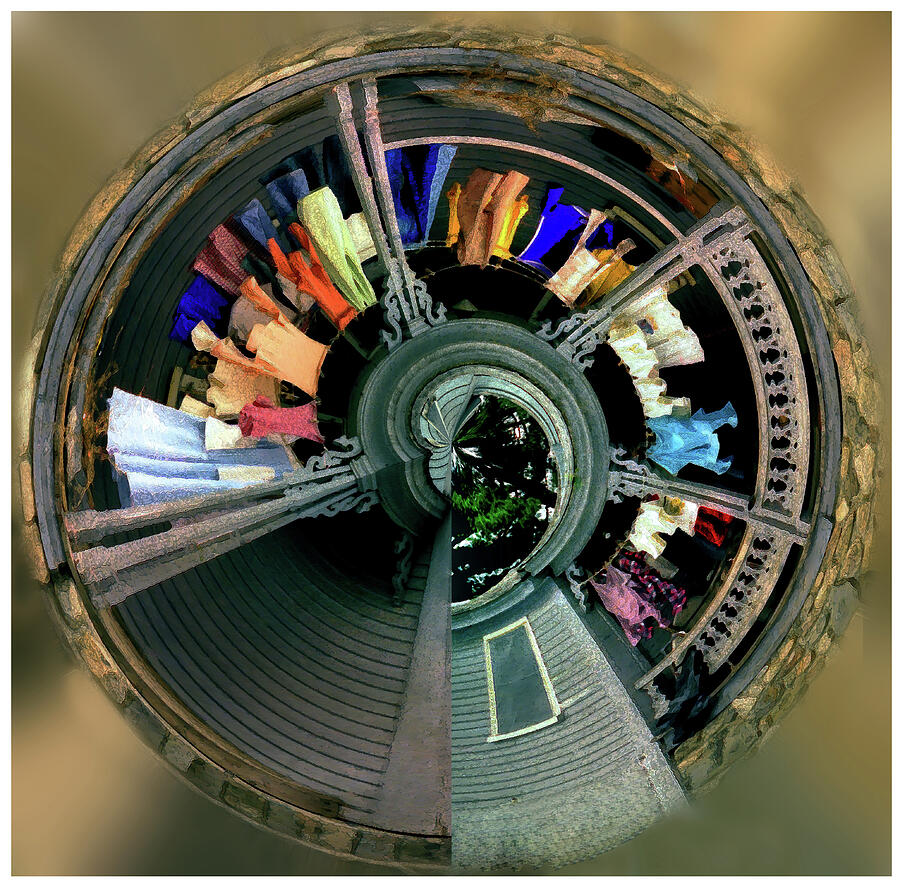Let's look at the original image first:

While this image stands on its own as a photograph that nicely documents a visit to the beach in Dakar Senegal if it were placed as is on the wall of a gallery people would be pointing at it and commenting on the very common nature of the image - and they would be right.
My first step was to envision the image that I wanted in the end. Looking at the image, it's clear that the extraneous people create a distraction. If I want to emphasize the two women on the beach I need to remove the extra people. I've shown this below in a very rough manner.

Using Photoshop, and specifically the clone tool and the healing brush tool, I removed the people.
I then switch to Photomatix Pro, creating three images of the same photo with two of them created as if I had shot them 2 stops higher and lower than the original - properly exposed - image. The purpose of this is to pick up a better range of tones throughout the image.
Merging these three images using photomatix to create the near-equivalent of an HDR image, I came up with the following image.

Now, I've isolated the two women in pink and made the colors "pop" a bit better, though I'm still not happy with the reflection of their bathing suits in the sand and I'm particularly disappointed with how the sky has washed out.
Back to Photoshop again I select the bathing suits in the sand and enhance them. You can do this in a number of ways, for example I could select the actual bathing suits using either the magic wand or the lasso tool and create a clone image from which I will raise the color of the suits on the beach. Don't forget that you will have to rotate and flip your clone images because a reflection reverses the direction of an image. You can then use the clone tool to raise the color level on the reflection or even drop the two cloned images right onto the image and using the eraser tool set to abut 20% gradually erase the top layer until it blends.
Finally I head for the sky. Over the years I have been doing this I have developed a number of watercolor skys from actually painting a sky on an image. If one of these will work for my needs I don't have to go to the trouble of painting the image but instead I can clone one of my previous skys.
Opening one of these at the same time as my image I see the two images together.


Using the cloning tool, set to an opacity of about 15% I clone the upper left hand corner of the sky and drag it back and forth across the sky of my original from top to bottom without releasing my mouse button. Each release of the mouse button and series of passes will clone 15% of the sky density from the photo on the right. I go as far as 45% and use the undo function to back it down to 30%, leaving my sky much more attractive and giving the entire image more of the feeling of a painting. The light area on the middle left is maintained but not as washed out. I could have made an additional pass over just this region if I wanted to have the sky be more uniform but I choose to keep the variation.

The final image is a hybrid photo that utilizes the techniques of both painting and photography to achieve its end results.



No comments:
Post a Comment